Alaskan Malamute
Showing 17–29 of 29 results
Temperament
Alaskan Malamutes are happy-go-lucky dogs who equate work with play. In truth, they also equate play with play. When they’re not fulfilling tasks set for them by their owner, they’re clowning around and just generally being goofy and funny to make their family laugh. They may sometimes be thought of as stubborn or strong-willed, but really, Alaskan Malamutes are just looking for a confident leader who can give them a job to do. They thrive on human attention and should not be left alone for long periods of time. They’re incredibly friendly to humans and not aggressive, so pet sitters are a good idea if you have to leave the house for more than a few hours. However, Alaskan Malamutes do not get along well with other dogs, so they may not be the best choice for a multi-dog household. They excel as the sole family dog, as they’re gentle and sweet with kids and adults alike, though they should always be supervised when playing with small children. The Malamute is so large and heavy that they may inadvertently cause harm if they get too excited. Alaskan Malamutes are smart and clever animals. They have a penchant for mischief and can be escape artists if they get bored. A well-exercised and well-socialized Malamute who has clear tasks to do throughout the day is a wonderful addition to any family.-
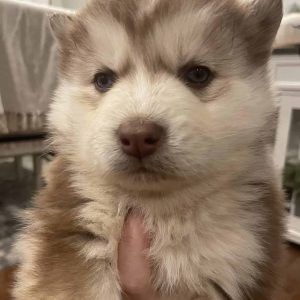
Husky Malamute Female Puppies
-
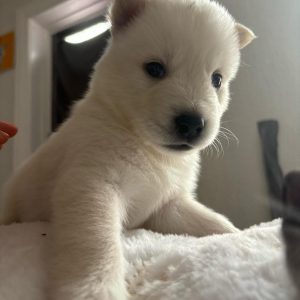
Husky’s malamute
-
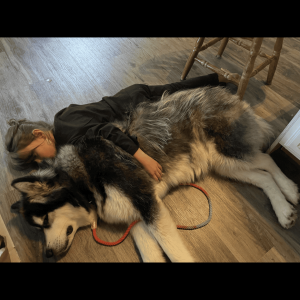
Ivan 2 yr Old Alaskan Malamute
-

January 1st pure malamute puppies born. 5 f/5 male
-
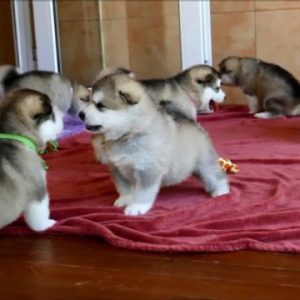
Kennel Club Registered Alaskan Malamutes puppies for sale male and female
-
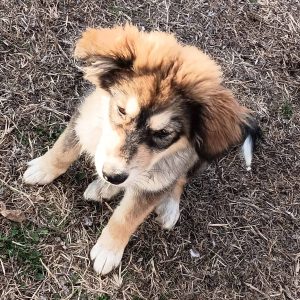
Malamute/Saint Bernard mix pup
-

Minerva’s Grey And White Blue Eyed Boy
-

Need to rehome an amazing Alaskan Malamute female
-
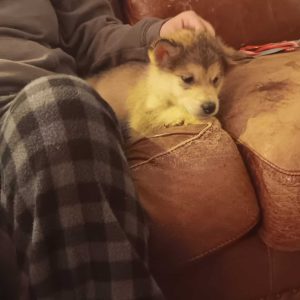
Puppies ready to go LOW PRICE
-
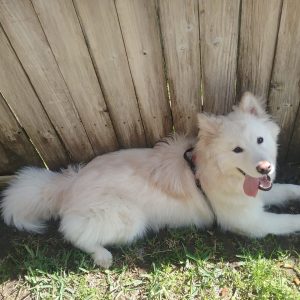
Rehoming Male Malamute
-

Stunning Alaskan Malamute Puppies for sale
-
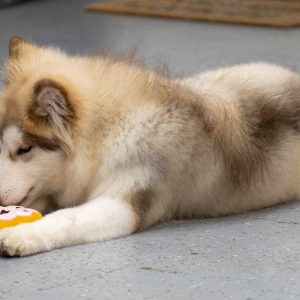
Tydus
-
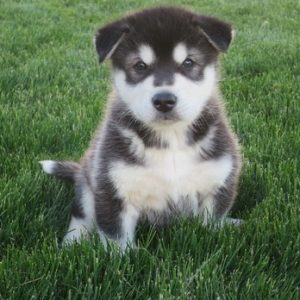
We have 2 beautiful AKC purebred Alaskan Malamute puppies for adoption
The Ultimate Guide to Alaskan Malamute
Origins
The Alaskan Malamute is one of the oldest dog breeds we know of – it’s also considered a basal breed, one of the sixteen dog breeds that are the source of all other dog breeds known today. While the Malamute’s cousin, the Siberian Husky, was bred to pull sleds at a high speed, the Malamute was intended to pull heavily laden sleds at a much slower pace over massive distances. Not only that, the Mahlemiut people who originally bred these dogs also used them to hunt large animals, such as the Polar bear. As a result of this utilitarian role the Alaskan Malamute played, the dogs had to be powerful, intelligent, and possess massive amounts of endurance. The breed came into high demand during the gold rush at the end of the 19th century, and Malamutes served miners well, carrying heavy sled loads of minerals throughout Alaska. Today the Alaskan Malamute is more often found as a family pet rather than as a working dog. However, the breed still retains all of the qualities that made it so successful and desirable for active, hardworking owners.
Key Characteristics of Alaskan Malamute
| Alaskan Malamute | Alaskan Malamutes are happy-go-lucky dogs who equate work with play. In truth, they also equate play with play. When they’re not fulfilling tasks set for them by their owner, they’re clowning around and just generally being goofy and funny to make their family laugh.
They may sometimes be thought of as stubborn or strong-willed, but really, Alaskan Malamutes are just looking for a confident leader who can give them a job to do. They thrive on human attention and should not be left alone for long periods of time.
They’re incredibly friendly to humans and not aggressive, so pet sitters are a good idea if you have to leave the house for more than a few hours. However, Alaskan Malamutes do not get along well with other dogs, so they may not be the best choice for a multi-dog household.
They excel as the sole family dog, as they’re gentle and sweet with kids and adults alike, though they should always be supervised when playing with small children. The Malamute is so large and heavy that they may inadvertently cause harm if they get too excited.
Alaskan Malamutes are smart and clever animals. They have a penchant for mischief and can be escape artists if they get bored. A well-exercised and well-socialized Malamute who has clear tasks to do throughout the day is a wonderful addition to any family. |
| Exercise Needs | The Malamute was originally bred to have endless stamina, a trait that modern Malamutes retain to this day. They have incredibly high energy levels and approach everything with an intensity that can be intimidating. Playtime for a Malamute may have them running around at full speed – which is still pretty fast, even if they aren’t as quick as Huskies.
While they’re known for their endurance, they also possess great agility, balance, and strength. Malamutes excel at any physical activity you choose to have them do. Your average Alaskan Malamute will need at least an hour and a half to two hours of exercise each day.
This amount of exercise and play is difficult for most owners to fit into one session, so it can be split up into multiple shorter sessions. Malamutes love to jog and will easily keep up with almost any human, so that’s one good way of tiring them out.
The only limitation Malamutes have when it comes to exercise is that they’re prone to heat exhaustion due to their thick double coat of fur. Limit their workouts to the cooler times of the day if you own an Alaskan Malamute and live in a warmer climate. |
| Alaskan Malamute Grooming | Alaskan Malamutes have a thick double coat to keep them warm in sub-zero temperatures. They have a thick outer guard coat that is medium-length and coarse. Their dense undercoat is around one to two inches deep, and is oily to keep out moisture.
There’s no other way to say it: Malamutes shed a lot. Their double coat does little to trap shed fur and dander, and they will not be ideal for those who suffer from dog allergies.
Malamutes do not tend to get dirty, as their coat is able to repel water and mud. Bathing does not need to be done very often, and most Malamute owners will give their dogs a bath every three to four months. It’s best to brush your Malamute’s teeth daily to prevent tooth and gum diseases. Nail trimming can be done every one to two months if your dog does not wear down their nails on their own. |
| Alaskan Malamute Training | Alaskan Malamutes love to work, and will need to have tasks to accomplish in order to prevent boredom and behavioral problems. They’re smart and relatively easy to train, and they excel at a variety of tasks. However, they are smart enough to be independent thinkers, which may make some Malamutes stubborn.
The best way to motivate a Malamute during training is with lots of positive reinforcement. Treats and toys will help keep them interested in the task at hand, though it is also a good idea to keep training sessions short so they don’t get tired of repetitive tasks. Five to ten-minute training sessions throughout the day will work better than an hour-long session once a day.
One trait that cannot be trained out of a Malamute is their tendency to dig. It is far easier to set aside a specific place where they are allowed to dig, such as a sandbox, so that they can get the impulse out of their system. |
| Alaskan Malamute Lifespan And Health Issues | Alaskan Malamutes have a normal lifespan for dogs their size, with a life expectancy of 10 to 14 years. Alaskan Malamutes may be prone to:
|
| Alaskan Malamute Size And Space Requirements | Alaskan Malamutes are large, heavyset dogs, with males weighing between 80 to 95 pounds, and females weighing between 70 to 85 pounds. Male Alaskan Malamutes will stand between 24 to 26 inches at the shoulder, while females will stand between 22 to 24 inches.
While they don’t necessarily need very large homes, Alaskan Malamutes can be very vocal, making them unsuited to apartment living. They don’t tend to bark, but many Alaskan Malamutes will howl and yelp a good deal. Medium or large houses in urban or rural areas can be a good fit for an Alaskan Malamute, so long as they can get outdoors for play time.
A secure yard with a fence that extends underground is ideal, as they are adept at digging under wire-link fences. Alaskan Malamutes have a high prey drive and may chase after smaller animals they see outside the fence. Because the Alaskan Malamute views itself as a member of the owner’s “pack”, they will want to live indoors with their family. They can be left outdoors so long as they have adequate shelter, but will be happiest if they can snuggle up to their owner at night. |
Other considerations:
- Alaskan Malamutes do not generally bark, but have a distinctive “woo woo” vocalization.
- Most Alaskan Malamutes do not make good guard dogs, as they are exceptionally friendly to strangers.
- There are breeders offering “giant” Malamutes, but these are just normal Malamutes that weigh over 100 pounds.
How can I take good care of my Alaskan Malamute or Puppy?
Proper socialization
Alaskan Malamute puppies should be socialized early and often. They are large dogs when they reach maturity, which can make it difficult to handle them if they become fearful or overly excited. It’s easier to teach them proper behavior and build their confidence at a young age.
Proper nutrition
Alaskan Malamutes are bred for harsh conditions and can handle low amounts of food. It’s best to give your Alaskan Malamute puppy high-quality, premium dog food. Large-breed specific food is a good option, as it has the right balance of nutrients for your dog to develop properly. Alaskan Malamutes are prone to weight gain, so it’s advisable to monitor their food intake closely. Speak to your veterinarian for more specific advice regarding your dog’s nutritional needs.
Up-to-date vaccinations
Upon bringing home your Alaskan Malamute puppy, it’s a good idea to contact a trusted veterinarian so they can advise you regarding the proper vaccination schedule for your puppy. Following this schedule is crucial in protecting your puppy from common transmissible diseases and bacteria.
Most Asked Alaskan Malamute Questions
-
+How Much do Alaskan Malamute Puppies Cost